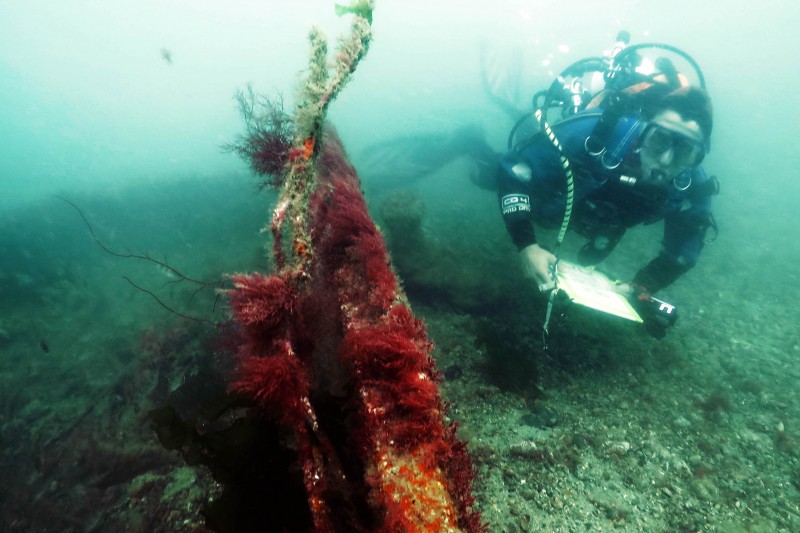
A host of more than 300 tanks at The Tank Museum in Bovington, some used in the D-Day landings, will benefit from Bournemouth University (BU) research to conserve and protect historically significant vehicles against metal fatigue and ageing.
The Tank Museum, alongside BU’s NanoCorr, Energy & Modelling (NCEM) Research Group, have funded research into causes of structural deterioration within large vehicles in the museum environment since 2009, developing a suite of numerical models that allow the museum to remotely monitor and predict structural failures.
The modelling technology allows for faster and more reliable structural analysis than was previously possible, with greater speed and accuracy in predicting structural failures and the consequent ability to mitigate problems, which has brought about savings in terms of costs, time and labour for the Tank Museum.
In addition to increasing the lifetime of historically-important battle tanks up to five-fold, and avoiding costly maintenance interventions, the research has also underpinned the successful bid for £2.5m Heritage Lottery funding, resulting in construction of a new Vehicle Conservation Centre with controlled environmental conditions at the Museum.
Speaking about the CMAP software developed for the Museum, BU’s Professor of Design, Engineering and Computing, Zulfiqar Khan said: “Modelling is usually theoretical and doesn’t completely fit on actual operational conditions therefore we developed in-situ condition monitoring techniques to enhance prediction models through detailed experimental results. In-situ condition monitoring techniques have been further developed in to remote smart sensing techniques”.
“We assume certain properties, but in reality it might not be the case. In order to model atmospheric contents – atmospheric quality is very important in terms of structural integrity failure – we monitored actual data in the Bovington area for three and a half years. We took day-by-day, hour-by-hour data, resulting in more than 153,000 data points.”
Professor Khan’s team have investigated 15 tanks of cultural and historic significance, including the US’s Sherman M4 tank, Germany’s Tiger 1 tank, and the UK’s Valentine tank.
Helen Smith, Deputy Director at The Tank Museum, said: “The Tank Museum is responsible for the preservation of over 300 historic armoured vehicles. Slowing the deterioration of metal is a significant part of that care, but it is a subject that hasn’t been explored in depth before”.
She added: “Working with Bournemouth University on this project will allow us to protect and conserve our vehicles for future generations.”
BU’s Maritime Archaeological Department research has also evaluated and investigated the condition of seven Valentine tanks sunk off the coast of Studland Bay, where six soldiers of the Royal Dragoon Guards were lost in Operation Smash, a live-fire exercise ahead of D-Day.
In 2014, a team of archaeological divers were able to pinpoint the stricken tanks, after which a second dive team were sent in to photograph key features and search the debris field around it for any other diagnostic features. A third team used an ultrasonic thickness meter and a bathycorrometer to conduct scientific tests on the hull of the tank, with data being used to compare the wrecks to surviving DD Valentines on the surface.
BU MSc Maritime Archaeology graduate Tom Harrison, who is now a Maritime Archaeologist and Dive Technician at MSDS Marine, said: Taking part in the DD tanks project was my first experience of marine archaeological work and it was an excellent opportunity to be offered a place in the project.
“This put to practice all of the theory work that I had done during my undergraduate degree. The multiple dives to check out anomalies, the recording, measuring and the use of search patterns was a great all around introduction to underwater work.”
The British-made Valentine tanks, converted to amphibious vehicles with the help of a 2.5m high canvas skirt, were found to be heavily dependent on calm waters, and had been designed to manage waves of under 1ft, resulting in their loss in Poole Bay and subsequent replacement by US Sherman tanks ahead of D-Day.
Despite an ultimately successful allied invasion, amphibious Sherman tanks used in the D-Day invasion met a similar fate to that of the Valentines at Poole Bay, proving no match for the 6ft waves they encountered on 6 June 1944. More than 100 amphibious tanks were lost during the beach assault, with harsh sea conditions at landing point Omaha Beach resulting in the loss of 27 of 29 vehicles.



